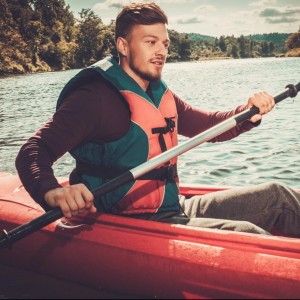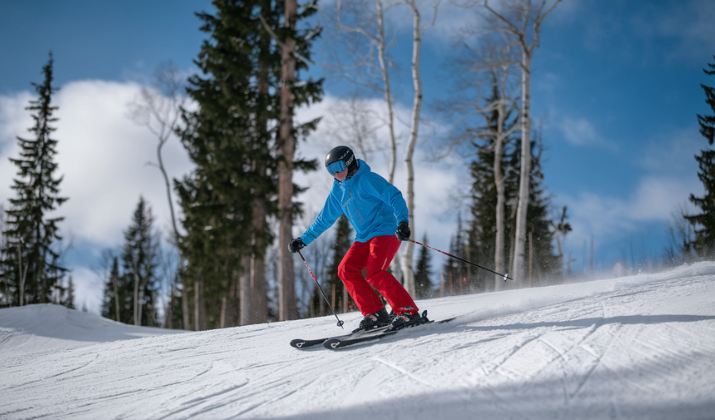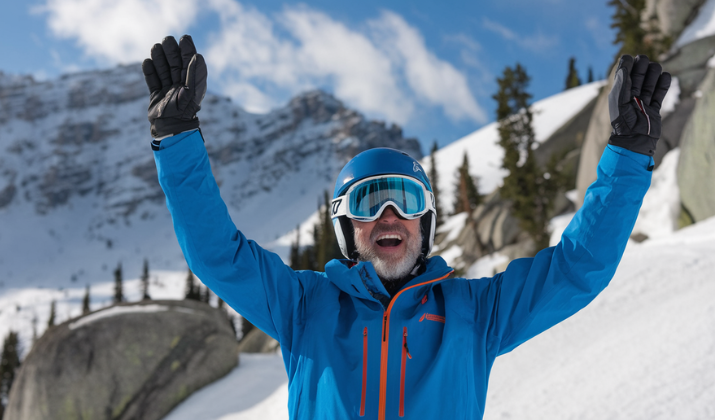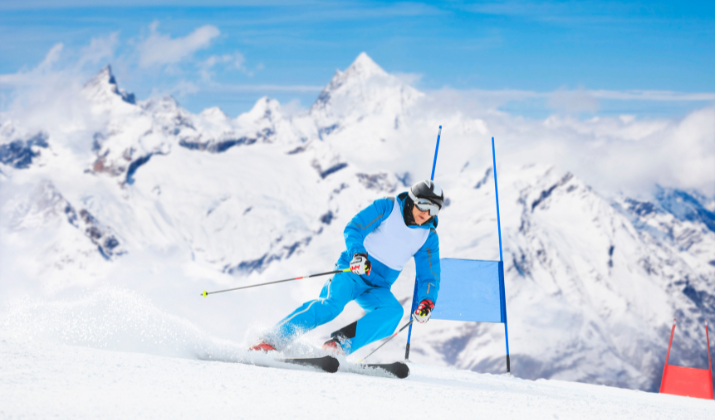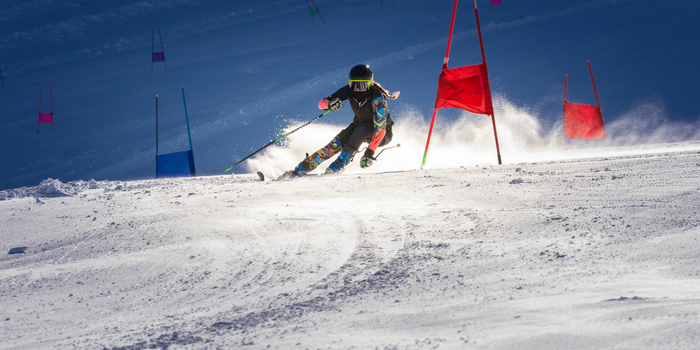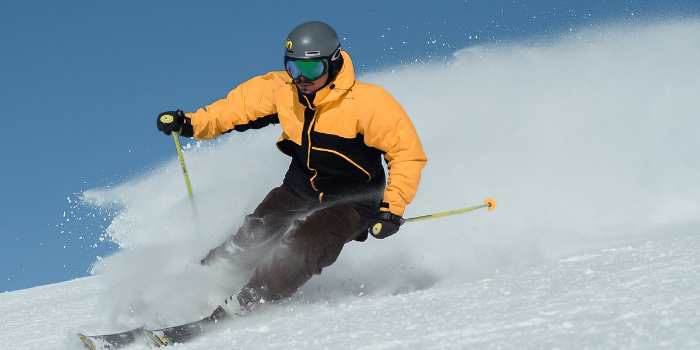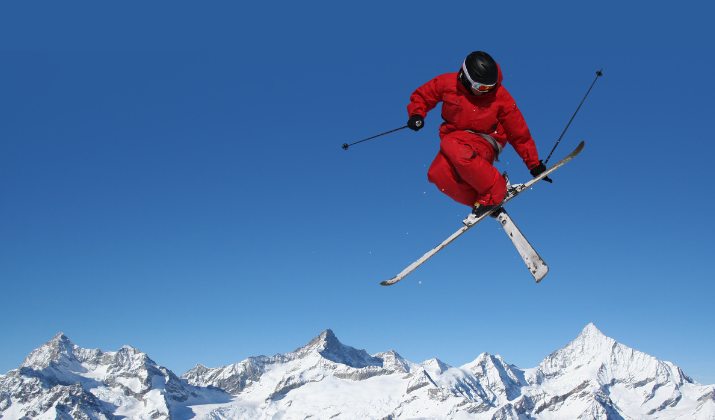Alpine skiing encompasses several disciplines that challenge athletes in different ways, with slalom and downhill standing as two of the most recognizable and contrasting events.
While both involve sliding down snow-covered slopes on skis, they represent opposite ends of the alpine skiing spectrum in terms of speed, technique, equipment, and course design.
Slalom emphasizes technical precision and rapid direction changes through tightly spaced gates, while downhill racing prioritizes raw speed and endurance as skiers hurtle down long, steep courses.
Understanding these differences provides not only greater appreciation for the athletes who master these disciplines but also valuable insight for recreational skiers looking to improve their own skills.
This exploration will delve into what makes each discipline unique, from their historical development to the specific physical demands they place on competitors.
Let’s find out more.
Historical Development
The origins of slalom and downhill skiing trace back to different needs and terrain.
Slalom’s roots lie in the Norwegian word “slalåm,” meaning “sloping track,” and developed in the mountainous regions where quick turns were necessary to navigate through trees and natural obstacles.
It became formalized as a competitive event in the early 20th century, with the first official slalom race held in 1922 in Mürren, Switzerland.
Downhill racing, meanwhile, evolved from the need to travel efficiently across alpine terrain, with early competitions in the Alps focusing on long-distance descents between mountain villages.
The first recognized downhill race was organized on the Arlberg-Kandahar circuit in 1911.
Both disciplines were included in the first Winter Olympics featuring alpine skiing in 1936, though they’ve evolved considerably since then with advancements in equipment technology and course design pushing the boundaries of what’s physically possible in each discipline.
Speed and Course Design
The most immediately apparent difference between slalom and downhill lies in their speeds and course layouts.
Downhill is the fastest alpine skiing discipline, with racers regularly exceeding speeds of 80 mph (130 km/h) on straightaways, and elite competitors sometimes approaching 100 mph (160 km/h) on the steepest sections.
Courses typically stretch between 1.5 to 2.5 miles (2.4 to 4 km), dropping vertically between 2,600 to 3,600 feet (800 to 1,100 meters) for men’s races, with women’s courses slightly shorter.
Downhill tracks incorporate various terrain features including jumps, compressions, and high-speed turns, with gates primarily serving to guide racers through the intended line rather than forcing technical turns.
Slalom, conversely, is characterized by much slower maximum speeds, typically 25-40 mph (40-65 km/h), but requires incredibly rapid direction changes. Slalom courses are much shorter, usually under half a mile (800 meters) with a vertical drop of approximately 650 feet (200 meters), and feature 55-75 gates for men and 45-60 gates for women.
These gates are positioned much closer together than in downhill, requiring quick, technically precise turns and creating a dramatically different racing experience focused on agility rather than sheer velocity.
Equipment Differences
The equipment used in slalom and downhill skiing reflects the distinct demands of each discipline.
Downhill skis are substantially longer, typically measuring between 210-225 cm for men and 200-215 cm for women, providing stability at high speeds.
They also feature a wider profile with a greater turning radius of approximately 45 meters, allowing for smoother arcs at velocity but less maneuverability for tight turns.
Slalom skis are notably shorter (155-165 cm for men, 150-155 cm for women) with a much tighter turning radius of around 13 meters, enabling the quick, sharp turns required to navigate closely spaced gates.
Protective equipment also differs significantly.
Downhill racers wear aerodynamic suits, full-face helmets, back protectors, padded suits, and specialized impact protection due to the extreme speeds and consequent crash risks.
Slalom competitors wear more minimal protection, typically focusing on shin guards, pole guards for the hands, and face guards attached to their helmets to deflect the gates they must hit as they pass through.
Even the ski boots differ, with downhill boots designed for power transmission and stability, while slalom boots emphasize lateral stiffness to facilitate rapid edge transitions between turns.
Technique and Skills
The technical approaches to slalom and downhill racing diverge dramatically.
Slalom technique centers on rapid weight shifts, aggressive edge engagement, and a compact athletic stance that enables quick reactions.
Skiers maintain a relatively centered position over their skis and use active leg movements to rapidly switch from edge to edge, with their upper bodies remaining relatively stable while their lower bodies work intensely to navigate the tight gate patterns.
Pole plants are essential, helping to time and initiate each turn in the rhythmic sequence required. Downhill technique, in contrast, emphasizes a streamlined aerodynamic position, the famous “tuck” where racers minimize their profile by crouching low with arms extended forward—and the ability to absorb terrain variations at high speed.
Weight is generally distributed more forward on the ski to maintain pressure on the front of the ski for stability, and turns are more gradual with less dramatic edge angles.
Downhill racers must develop exceptional line choice skills, memorizing the optimal path through a course and making subtle adjustments based on snow conditions and visibility.
Both disciplines require years of specialized training, but they develop distinctly different muscle memory patterns and technical reflexes.
Physical Demands
The physical requirements of slalom and downhill skiing place different demands on athletes’ bodies.
Slalom racing is primarily anaerobic, requiring explosive power, quick-twitch muscle fibers, and remarkable leg strength for the constant, rapid accelerations and decelerations through turns.
A typical slalom run lasts only 45-60 seconds but demands intense concentration and maximum effort throughout, with heart rates regularly reaching near-maximum levels.
Lower body strength, particularly in the quadriceps, hamstrings, and core, is critical for maintaining control through the aggressive turns.
Downhill racing, while still requiring significant strength, places greater emphasis on aerobic endurance, with runs lasting approximately two minutes of sustained exertion.
The prolonged aerodynamic tuck position creates intense isometric strain on the quadriceps and lower back, while the high speeds generate extreme G-forces through turns that can exceed 3.5G, requiring exceptional strength and conditioning to withstand.
Mental endurance also differs. Slalom requires absolute focus for a shorter duration with multiple decision points per second, while downhill demands sustained concentration and the courage to maintain optimum line choice despite the inherent danger of high-speed descents.
Risk and Safety Considerations
The risk profiles of slalom and downhill skiing differ substantially, influencing both training approaches and racing strategies.
Downhill skiing carries significantly higher risk due to the extreme speeds involved, with crashes potentially resulting in severe injuries including fractures, ligament tears, concussions, and in rare cases, fatalities.
Course safety features include extensive netting, padding on obstacles, and airbag systems at particularly dangerous sections.
Athletes must complete mandatory training runs before competition to familiarize themselves with the course and identify hazardous sections.
Slalom racing, while operating at lower speeds, still presents considerable risk, particularly to the knees and lower extremities due to the forceful, repetitive turning motions and potential for catching edges.
Injuries often occur when skiers catch a gate with their bodies or equipment, causing sudden deceleration. Both disciplines have seen evolutions in safety equipment, with advances in helmet technology, body protection, and breakaway gate designs significantly reducing injury rates over recent decades.
However, the fundamental difference remains that downhill errors often result in more catastrophic injuries due to the higher energy involved in crashes, while slalom injuries tend to be more cumulative and stress-related over time.
Competitive Structure and Strategy
The competitive formats of slalom and downhill events reflect their different natures. Downhill competitions typically consist of a single run, with the fastest time determining the winner.
This one-shot approach increases pressure on athletes, as a single mistake can eliminate any chance of victory.
Racers generally get two to three official training runs on the actual race course in the days before competition, using this time to memorize the terrain and plan their line.
Strategic decisions center around the balance between taking aggressive lines for speed versus maintaining control, with weather and snow conditions often playing decisive roles in these calculations.
Slalom competitions, by contrast, traditionally consist of two runs on different course settings, with the combined time determining final standings.
Between runs, only the top 30 finishers advance, with the starting order reversed so the fastest skier from the first run starts 30th in the second run.
This format rewards consistency across changing course conditions as the surface deteriorates with each competitor.
Strategic considerations in slalom include adjusting turn tactics for different gate combinations and adapting to changing snow conditions, which can transition from icy to soft within a single course as the day progresses.
Recreational Applications
The skills developed in both slalom and downhill training translate differently to recreational skiing, offering complementary benefits for enthusiasts.
Recreational skiers who practice slalom-style skiing, making short, quick turns on moderately steep slopes—typically develop superior control and confidence on challenging terrain, especially in tight spaces like moguls, trees, and crowded slopes.
The edge control and weight-shifting techniques learned from slalom practice enhance adaptability across varied conditions. Downhill-inspired skiing, emphasizing longer turns and comfort with speed, builds confidence on open slopes and improves efficiency when covering longer distances.
Many recreational skiers unconsciously blend elements from both disciplines, making wider turns on open terrain but transitioning to shorter turns when navigating congested areas or steeper pitches.
Ski instructors often incorporate training elements from both disciplines in lessons, teaching slalom-style short turns for building fundamental skills before introducing the longer, carved turns that borrow from downhill technique.
The most versatile recreational skiers develop proficiency in both approaches, allowing them to adapt their skiing style to whatever terrain and conditions they encounter.
Conclusion
The contrast between slalom and downhill skiing represents the beautiful diversity within alpine skiing, one celebrating technical precision and agility, the other showcasing raw speed and courage.
These disciplines have evolved as specialized pursuits that demand different physical attributes, equipment, training regimens, and mental approaches.
Slalom challenges athletes with rapid decision-making and explosive movements through tightly spaced technical sections, while downhill tests a skier’s nerve, line-reading ability, and capacity to maintain control at breathtaking speeds.
Understanding these differences enhances appreciation for the remarkable athletes who excel in these events and provides valuable context for recreational skiers seeking to develop their own skills.

